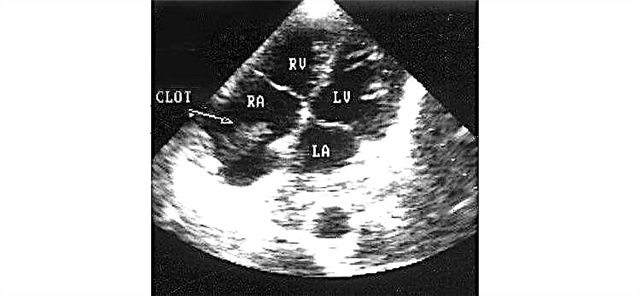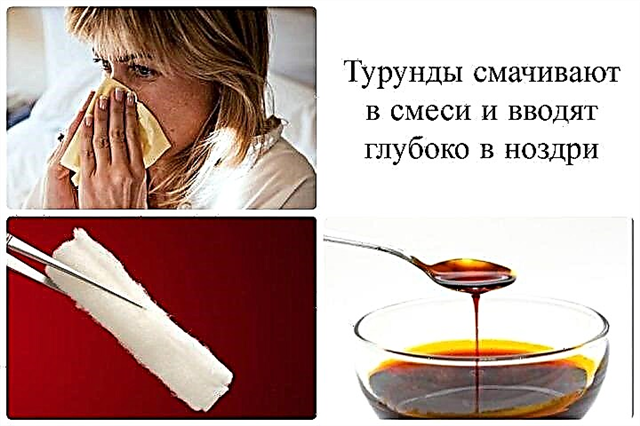Staphylococci are a whole group of bacteria, some of which are completely harmless to humans. But there are others - they can become causative agents of life-threatening diseases. One of the varieties of staphylococci - epidermal - is constantly present on the surface of human skin and mucous membranes. The name of this microbe originated from the word "skin" (dermis in Latin). Since it is not dangerous for a healthy person, it does not need to be treated. But when the immune system weakens, the body may need help to fight this microorganism.
Insidious staphylococcus
 Very often, staphylococcus epidermidis is found in the nose quite by accident, when a bacterial culture of mucus is done to identify other microorganisms. Of course, such an analysis is not simply assigned. But the thought that pathogenic bacteria have settled in the body prompts the following symptoms:
Very often, staphylococcus epidermidis is found in the nose quite by accident, when a bacterial culture of mucus is done to identify other microorganisms. Of course, such an analysis is not simply assigned. But the thought that pathogenic bacteria have settled in the body prompts the following symptoms:
- inflammation of the skin and mucous membranes of the nose;
- weakness, signs of general intoxication;
- subfebrile body temperature;
- profuse mucus (often yellow-green);
- the appearance of pimples and pustules on the nose.
Moreover, this insidious infection rarely gives acute conditions. Most often, it provokes sluggish inflammatory processes or passes in a subacute stage. Therefore, rarely does anyone see a doctor in the early days of the disease.
Infection routes
You can get infected with epidermal staphylococcus anywhere. This is a very tenacious bacterium that can exist for a long time on various surfaces, does not die in direct sunlight, and is resistant to most antiseptics. That is, by touching any surface in public places, you can become a carrier of staphylococcus.
Whether it takes root in your body or not depends on the state of your body. If the integrity of the skin or mucous membranes is violated, it easily penetrates the bloodstream and is transferred to the internal organs, causing general intoxication and provoking inflammatory processes. When it gets on the mucous membrane, it can be destroyed by human immune cells or begin to actively develop, forming whole colonies.
At risk are people with weakened natural defenses of the body:
- bottle-fed babies;
- pregnant and lactating women;
- patients with chronic diseases;
- recent trauma or surgery;
- smokers, drug addicts, alcoholics, substance abusers.
Staphylococcus epidermidis can be activated after severe or prolonged stress, with constant malnutrition or lack of sleep, with chronic fatigue, sudden changes in the time zone or climatic conditions, after severe hypothermia.
Treatment features
 Surprisingly, the use of antibiotics is not the best solution to combat this particular microorganism. Moreover, when you make the choice of the drug yourself, and not as prescribed by a specialist. Epidermal staphylococcus aureus is resistant to penicillin antibiotics and most broad-spectrum drugs.
Surprisingly, the use of antibiotics is not the best solution to combat this particular microorganism. Moreover, when you make the choice of the drug yourself, and not as prescribed by a specialist. Epidermal staphylococcus aureus is resistant to penicillin antibiotics and most broad-spectrum drugs.
Improper use of antibiotics will lead to the fact that they will further weaken the immune system and only create more favorable conditions for the reproduction of staphylococcus. Therefore, such a decision should only be made by the attending physician based on the results of tests, during which a test is carried out for the sensitivity of the bacteria to various drugs.
At the same time, it is very important to use external drying agents in order to prevent further damage to the mucous membranes and skin. To cope with the problem faster, it is necessary to strengthen the immune system, therefore, immunostimulants and vitamins are prescribed in parallel.
In order to relieve swelling and reduce mucus production, antihistamines are prescribed. That is, the therapeutic approach must be comprehensive.
Inhalation advantage
Excellent results are obtained by treatment with inhalations of epidermal staphylococcus in the nose. It can be used both as an independent course and as an adjuvant therapy against the background of drug treatment. Moreover, ready-made pharmaceutical solutions, and medicinal decoctions, essential oils diluted with water, and other folk remedies can be used for inhalation.
 The advantage of inhalation over other methods of treatment is that it has a much-needed complex effect on the respiratory tract: it moisturizes the mucous membranes, relieves irritation and inflammation, has an antibacterial and antiseptic effect, makes breathing easier, relieves itching and irritation.
The advantage of inhalation over other methods of treatment is that it has a much-needed complex effect on the respiratory tract: it moisturizes the mucous membranes, relieves irritation and inflammation, has an antibacterial and antiseptic effect, makes breathing easier, relieves itching and irritation.
If the procedure is carried out correctly, medicinal solutions penetrate deep into the respiratory tract, preventing the multiplication of pathogenic microflora in the larynx, bronchi and lungs. Thus, staphylococcal tonsillitis, pharyngitis, tracheitis, bronchitis and other troubles are prevented.
Steam inhalation is the most effective for the treatment of staphylococcus.
The use of a more modern nebulizer, which converts the drug into a finely dispersed solution, will not give the expected effect, since the drug will not linger in the nose, but will immediately enter the bronchi and lungs. Also, decoctions of medicinal herbs should not be poured into the nebulizer, and some of them bring very good results.
Inhalation solutions
For inhalation, it is necessary to choose, first of all, solutions and decoctions of plants with pronounced antibacterial and antiseptic properties. Excellent effects are given by:
- alcohol tincture of propolis: 10 ml per glass of hot water;
- alcohol tincture of calendula in the same proportions;
- strong decoctions of medicinal herbs: celandine, eucalyptus, St. John's wort, calendula;
- decoction of birch buds;
- decoction of pine shoots;
- essential oils dissolved in water: 10-15 drops per glass of hot water.
 Essential oils should be dripped just before inhalation; they are highly volatile and evaporate quickly. Any coniferous oils, tea tree oil, juniper, eucalyptus, celandine, ylang-ylang, lemon oil are well suited for inhalation.
Essential oils should be dripped just before inhalation; they are highly volatile and evaporate quickly. Any coniferous oils, tea tree oil, juniper, eucalyptus, celandine, ylang-ylang, lemon oil are well suited for inhalation.
To prepare a strong broth, you need to take a tablespoon of the selected plant, pour a glass of boiling water over it and boil it over very low heat for 5-10 minutes. Pour everything into a thermos or close the lid and wrap with a towel. Insist for at least an hour. Then strain and inhale without diluting the solution with water.
It is better to use a special inhaler with a mask. If not, then you can breathe steam over the saucepan, covering your head with a towel. Before inhalation, clean your nose well, you can rinse it with clean water (do not drip!). The duration of the procedure is 7-10 minutes. Try to inhale with your nose, exhale with your mouth.
For half an hour after inhalation, do not eat, drink, try not to speak loudly. Abundant nasal discharge may begin - this is good - the body cleans itself of excess mucus and flushes out hostile bacteria. It is not necessary to use vasoconstrictor drops - let the snot flow out, you just need to clear the nose. After some time, the flow will stop by itself.
Additional measures
If you are not a supporter of the use of drugs and have chosen inhalation as the main method of treatment, you can help the body to cope with the infection faster by using other folk remedies. Now it is especially important to do everything possible to strengthen the immune system.
 The most famous and effective natural immunomodulators are: ginseng, echinacea, eleutherococcus, mummy.It is advisable to take tinctures based on them 2-3 times a day, in the amount prescribed in the instructions throughout the entire course of intensive therapy.
The most famous and effective natural immunomodulators are: ginseng, echinacea, eleutherococcus, mummy.It is advisable to take tinctures based on them 2-3 times a day, in the amount prescribed in the instructions throughout the entire course of intensive therapy.
Herbal teas will help to quickly remove toxins from the body and strengthen it, with which it is advisable to replace regular tea and coffee for this period. You can brew one of the herbs or make a collection, picking plants to your liking. The greatest benefits will be brought by: chamomile, linden, raspberries, plantain, wild rose, barberry, elderberry, string, licorice root.
You should not be too zealous - the maximum dose of herbal tea is 1 liter per day. This is a cup every 3-4 hours.
The secret weapon in the fight against staphylococcus can be the food we are used to, the amount of which in the diet should simply be increased (if there are no medical contraindications to them). Onions, garlic, red peppers, coriander, cinnamon, mustard, horseradish are foods that kill most pathogenic microorganisms. And staphylococcus is no exception. You should try to eat them with every meal.
Fresh fruits and berries contain a large amount of vitamins and organic acids, which also create unfavorable conditions for staphylococci. On the table every day should be present: apples, apricots (or dried apricots), citrus fruits, currants, cherries, dogwood, gooseberries, raspberries, pomegranates.
Prevention and Precautions
The best prevention of Staphylococcus epidermidis is a strong immune system, a healthy lifestyle and adherence to the rules of personal hygiene. Quitting bad habits reduces the likelihood of symptoms of the disease several times. Washing hands before eating and after going to the toilet reduces the risk of primary infection tenfold.
 But if the symptoms have already appeared, it is necessary to observe preventive measures that will help to avoid infection of others and the transfer of the disease to other parts of the body:
But if the symptoms have already appeared, it is necessary to observe preventive measures that will help to avoid infection of others and the transfer of the disease to other parts of the body:
- allocate separate dishes, linens, towels for the patient;
- try to limit his contact with children;
- ventilate the room at least 2 times a day;
- monitor the temperature and humidity of the air;
- before and after performing medical procedures, wash your hands with soap and water;
- do not comb crusts and wounds on the skin and nasal mucosa;
- do not touch the affected areas unnecessarily with your hands;
- change the pillowcase daily and iron it with an iron;
- use a separate mask for inhalation or sterilize it.
By following these rules, you will not leave a single chance for the infection to spread throughout the body. By choosing the right treatment strategy, protect the internal organs from it. And by strengthening the immune system, do not allow its external manifestations to recur. Therefore, treat yourself correctly!



